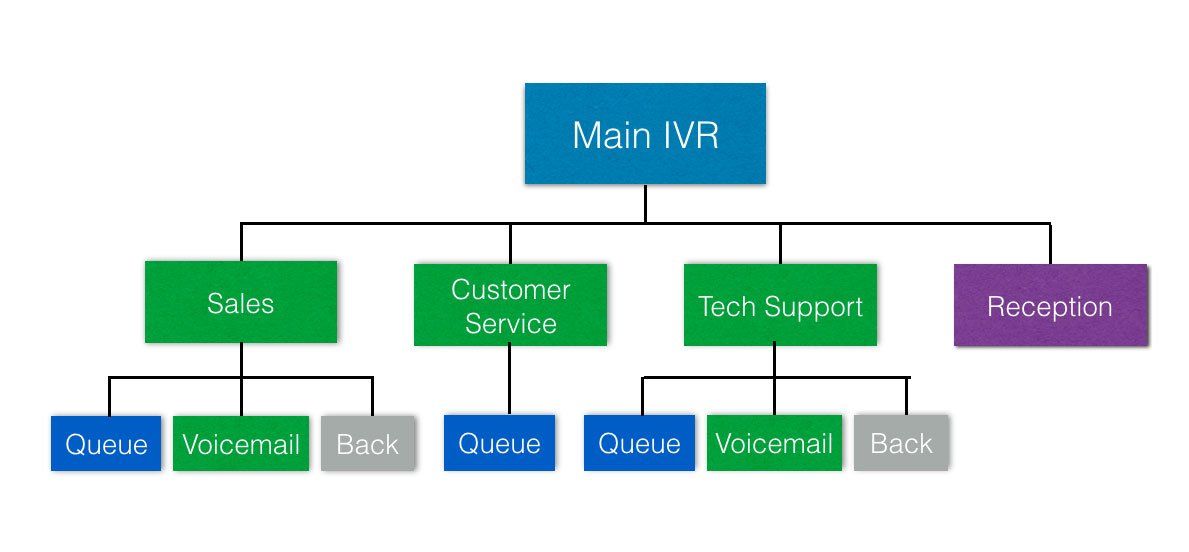IVR stands for interactive voice response. IVR is a technology that allows incoming callers to self-navigate a phone system with automated prompts. Some IVRs work by way of dual-tone multi-frequency (DTMF) tones from traditional telephony, while others use voice recognition and artificial intelligence (AI) to route callers.
Why is IVR important to Customer Service?
IVRs have long been used to help customers find information, or the correct human contact, efficiently and quickly. IVRs can identify, segment, and route callers to specific customer-service agents at substantial cost savings over traditional manual processes.
The 3 Main Uses of IVRs
- Personalized messages and prompts: Rather than general instructions, such as “Press 1 for Sales,” systems allow for configuration of customized greetings and prompts based on the caller’s identification
- Pre-agent information collection: IVRs collect general information about a customer’s needs and transfer a call to the appropriate area within the organization
- Automated customer support: IVRs enable support teams to have customers solve their own problems or obtain information without speaking with an agent

In theory, IVR lends efficiency on both sides of the equation. For customers, it helps expedite self-service options. For companies, it helps streamline the customer-service operations and automate tasks that do not need to be performed by a human. IVR thus saves time, provides richer experiences and empowers agents to put their time and energy toward scenarios where they’re most efficiently utilized.
The Reality of IVR
However, the reality is quite different. Even as IVR systems have become easier to use and less expensive to deploy, they are still fraught with customer-experience problems. Customers frequently find them aggravating. They can create a perception that the customer is doing needless or circuitous work to achieve the same effect he or she could achieve through a human agent much faster. At best, they require patience and create a disjointed customer experience. At worst, they disrupt the flow of customer support and create customer animosity.
How Helpshift Improves Upon IVR
Messaging is a better alternative to traditional phone IVR because it takes place in a format that customers are comfortable with, and with a conversational cadence that’s far more similar to human conversation. Chatbots can collect routine information, interpret customer needs, and route the customer down the correct path without beeps, tones, or button-pushing.
In fact, today, 57 percent of customers now prefer to contact companies via digital customer service channels rather than use voice-based IVR. Although IVR still has its place, it’s no longer the reigning champion of customer experience — if it ever was.
Additional Information About IVR
- Product Information: Helpshift and Amazon Connect Advanced Technology Partnership
- Product Information: Helpshift for Phone IVR Integration
- Blog post: IVR Automation: The Right Idea but the Wrong Application
- Blog post: The New Imperative of AI-Powered Issue Classification: Why We Created Helpshift Predict



